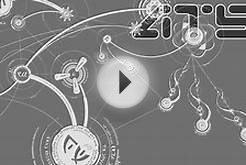 I’m a big believer of creating your own products to sell online. Whether it’s something like an eBook, a membership website, or software of some kind, building your own products can yield the highest profits, as well give you a fantastic foundation to live a passive income lifestyle.
I’m a big believer of creating your own products to sell online. Whether it’s something like an eBook, a membership website, or software of some kind, building your own products can yield the highest profits, as well give you a fantastic foundation to live a passive income lifestyle.
However, I know that not everyone is cut out to create their own products. Some people simply don’t have the time, while others don’t think they have information to make a worthwhile product. Sadly, some people know they have the information, but are just lazy.
Whatever the reason may be for not wanting to create your own product, I’m sure most of you know that you have the option of simply skipping that step and selling other people’s products as an affiliate instead, earning a commission for each sale that you drive. Heck – sometimes you don’t even have to create a sales page or worry about closing the deal, you just have to drive traffic to a certain page, and it takes care of the rest.
On top of that, there’s no need to worry about customer service, which is the one thing that can take some time away from an entirely passive income lifestyle if you’re earning money with your own products. I speak from experience.
Although I do sell products of my own online, I’m also an affiliate for various products in multiple niches as well. I’m actually seeing quite a lot of success too, as you can read in my latest income report.
I use multiple strategies to build up my affiliate income. Here is a majority of them, which I’m happy to share with you in case you were looking at some new and creative ways to boost your affiliate income.
A Resource Page
It just lists a number of resources that I recommend, along with a brief description of each. It helps people who are looking for solutions, and it helps me because some of those resources are affiliate links. It’s an entirely amicable way of earning an income and building authority and trust with your readers. A win-win for all.
An “Extension” – Page
An extension page is similar to a resource page, however you do a little bit more to make it feel like what their looking at is related to your brand.
For example, on my GreenExamAcademy.com website where I sell study guides that I created for the LEED exam, I have a page for practice exams. On this page (which is still on the greenexamacademy.com domain), I describe a number of various practice exams that people can purchase. It is only then when people click on the affiliate link (which is a call to action) that they are taken to a product page on a third-party website.
To make this process flow even better, I should probably include some imagery on my own site that may also be seen on the third-party website, so there is even more cohesiveness in the buying process between both sites.
Sidebar Banner Ads
As you can see (if you’re not reading this in an RSS reader), there are four 125×125 pixel banner ads in the sidebar on the right hand side of the blog, which are all affiliate links to certain products that I recommend. I’ve been debating for a while whether to keep these up or take them down, but they still produce a rather substantial amount of click-throughs each month, so for now they are staying up.












